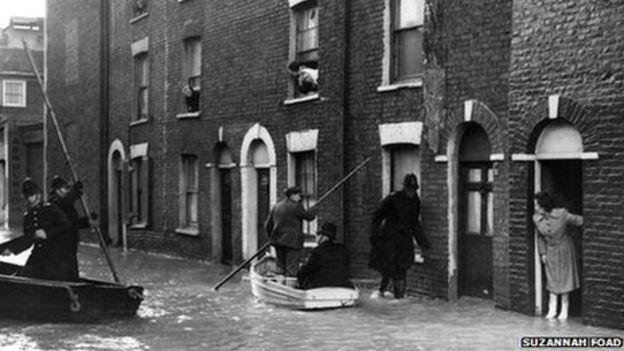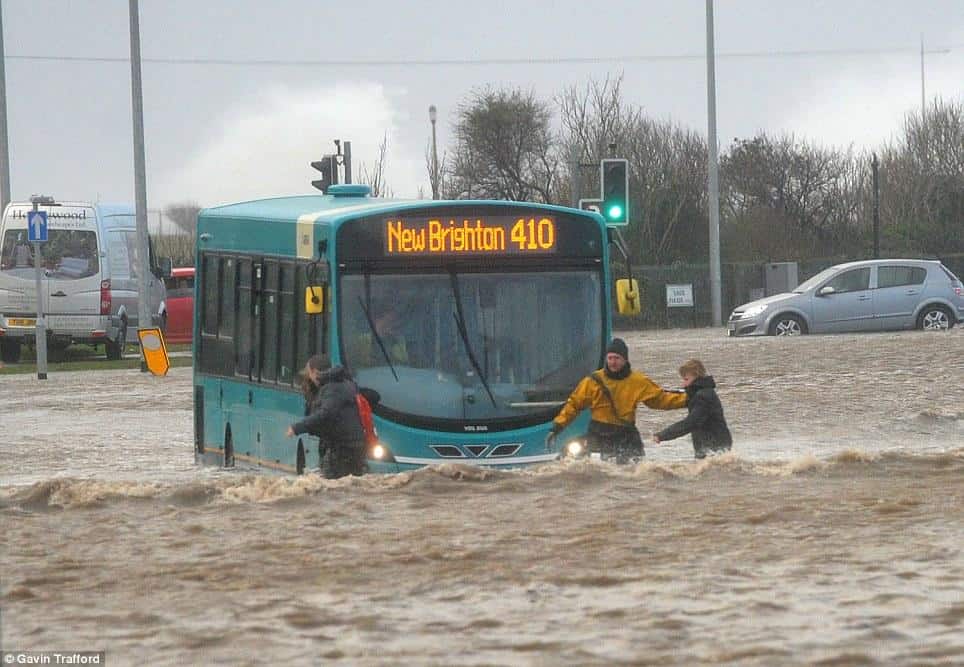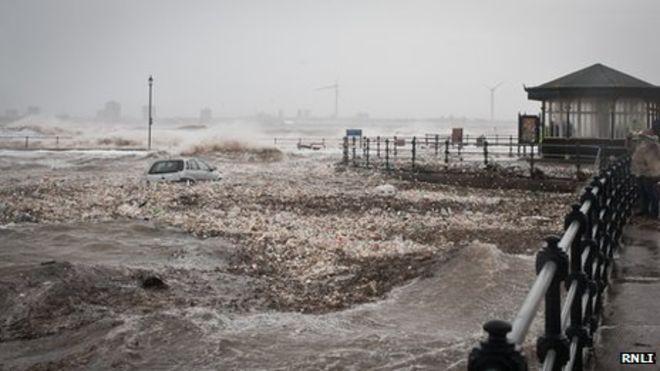Kent and Sussex flooding
More people than ever before live in the coastal floodplains and providing accurate and timely warnings to all these people is a major task. It is certain that extreme storms such as those described above will occur again and flooding to some degree is likely. However, sea defences in the UK were improved following the floods of 1953 and have in many cases been raised further in recent years to take account of sea level rise and isostatic adjustments. The level of protection varies with the greatest levels of defence against flooding to be found in urban areas. In addition, there is a much improved flood warning system in place to alert people at risk to the dangers of a major storm.
Local Authorities and the Environment Agency are constantly monitoring their sections of coast and their coastal defences to ensure we are best prepared for the inevitable – another storm.
History of flooding
13th Century
In the early 13th century some 100,000 people were killed in Holland as the sea swept over sea defences and destroyed several villages. Serious flooding which leads to significant loss of life and property are also recorded throughout the last 1000 years with the 13th and 14th centuries particular noted for sea flooding in the southeast of England, (Bowler, 1975).
1953
Nearly seventy years have passed since the East coast of Britain and Northern Europe were devastated by the worst floods in living memory. In the UK, over three hundred people drowned. Thousands more were left homeless. Nearly 100,000 hectares of Eastern England were flooded as coastal defences were inundated all the way from Lincolnshire to Kent, including parts of London.
North Sea Floods of the 31st January and 1st February 1953 on England’s east coast caused over 30,000 people to be evacuated from flooded homes, some of which were simply washed away. Businesses, factories and farms were destroyed. Roads and railways were washed away, power stations were shut down and communication lines cut. Tens of thousands of livestock were lost. The damage is estimated to have cost around £50million (1953 prices). A similar scenario today would result in losses running into many billions.
The situation in northern Europe was worse still with a death toll in the Netherlands of around 1,800 people.
More recently, severe storms hit the east coast of Britain. As a result of all of these storms there was widespread damage to the coastal towns and flood basin.
Additional reading and further information relating to flooding, storm surges and specifically the 1953 and 2013 floods
1953 floods
https://www.metoffice.gov.uk/news/in-depth/1953-east-coast-flood
https://www.bbc.co.uk/news/uk-england-kent-21262231
2013 floods
https://www.bbc.co.uk/news/uk-england-25253695
https://www.bbc.co.uk/news/uk-england-26159970
https://www.theguardian.com/uk-news/2013/dec/25/christmas-storms-thousands-flooded-power
https://www.metoffice.gov.uk/climate/uk/interesting/2013-decwind
Additional information on flooding and storm surges
https://www.metoffice.gov.uk/weather/learn-about/weather/types-of-weather/storms/storm-surge
https://www.nhc.noaa.gov/surge/
https://www.ntslf.org/storm-surges/about-storm-surges
https://coastal.climatecentral.org/map/
https://www.climatechangepost.com/united-kingdom/coastal-floods/
Photos from flooding



